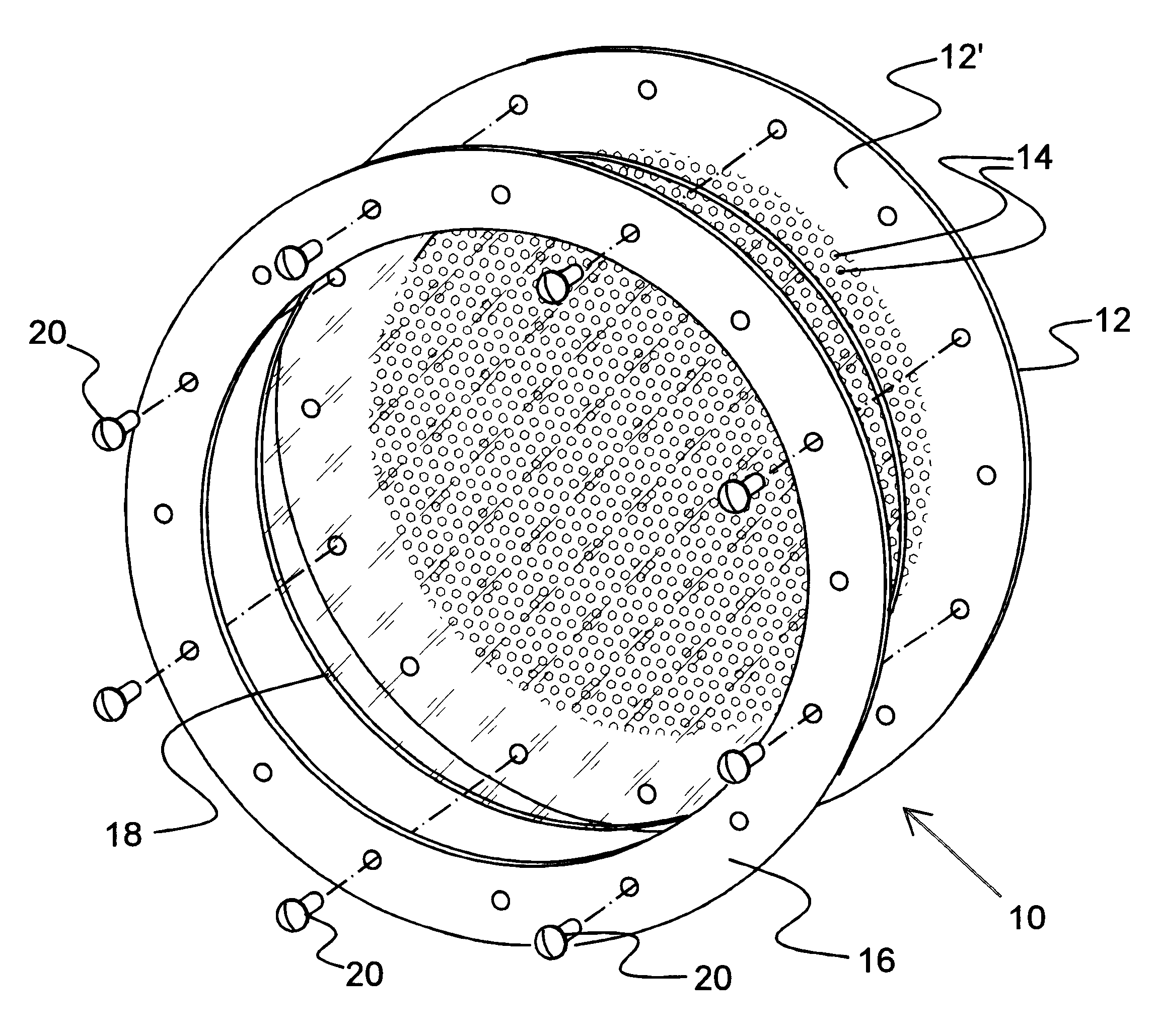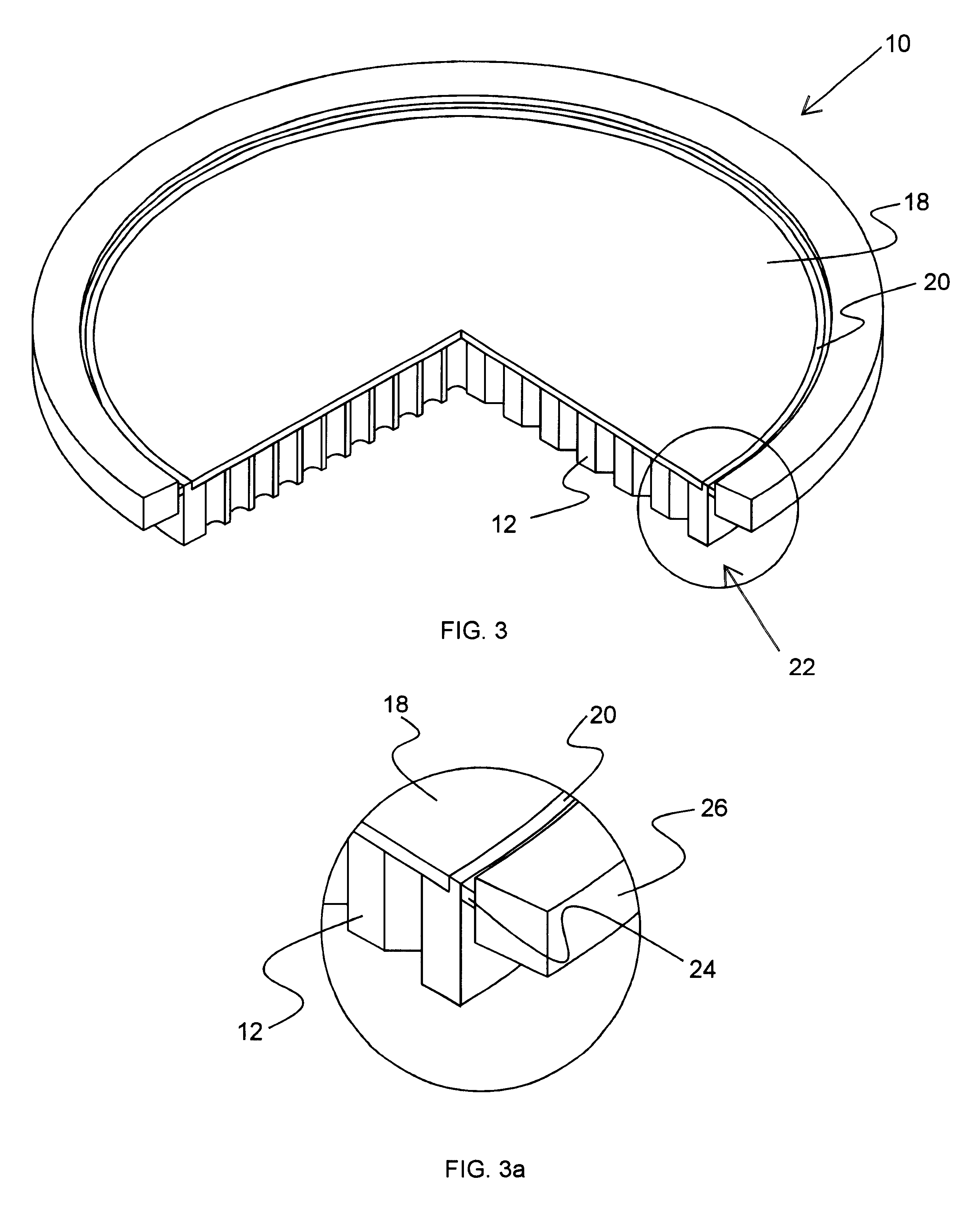Transparent metallic millimeter-wave window
a millimeter-wave window and transparent technology, applied in waveguide devices, basic electric elements, electrical equipment, etc., can solve the problems of high loss tangent heat generation of windows, insufficient thermal performance of diamond windows designed for cw operation, and high cost of diamond windows
- Summary
- Abstract
- Description
- Claims
- Application Information
AI Technical Summary
Benefits of technology
Problems solved by technology
Method used
Image
Examples
Embodiment Construction
In accordance with the present invention, a transparent metallic millimeter-wave window is provided. The window is constructed from a high conductivity metal, such as copper. One can make a metallic plate transparent over a range of frequencies by perforating it with a periodic array of slots. For the output window of a gyrotron, one might choose an equilateral triangular array of circular holes. By proper choice of the hole spacing and diameter, the window can be made transparent at any desired frequency.
In particular, the present invention is a dielectric-covered metallic window that is transparent at millimeter-wave frequencies. The window is constructed from a metal plate perforated by a periodic array of holes and covered by a thin dielectric plate. The diameter of the holes and the periodicity of the array are chosen to minimize the power reflected at the design frequency. A window constructed to demonstrate the concept is shown in FIG. 1. The window 10 comprises a metal plate...
PUM
 Login to View More
Login to View More Abstract
Description
Claims
Application Information
 Login to View More
Login to View More - R&D
- Intellectual Property
- Life Sciences
- Materials
- Tech Scout
- Unparalleled Data Quality
- Higher Quality Content
- 60% Fewer Hallucinations
Browse by: Latest US Patents, China's latest patents, Technical Efficacy Thesaurus, Application Domain, Technology Topic, Popular Technical Reports.
© 2025 PatSnap. All rights reserved.Legal|Privacy policy|Modern Slavery Act Transparency Statement|Sitemap|About US| Contact US: help@patsnap.com



